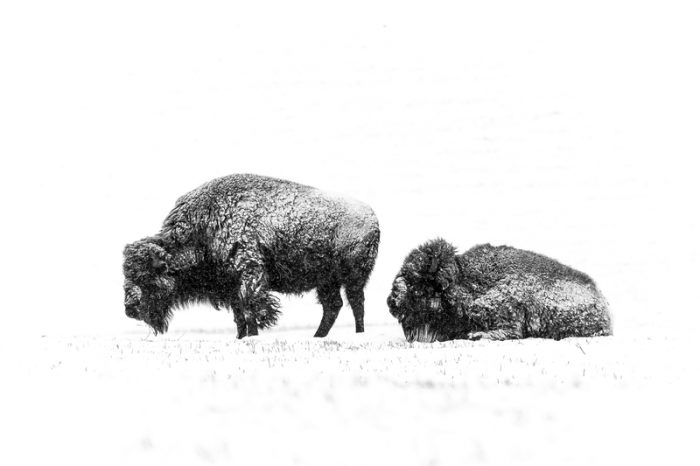For thousands of years, bison were the most plentiful large mammal in North America. Just how many were there? As recently as the start of the 1800s, there were over 50 million bison roaming the Canadian and American plains.
But severe overhunting during the 1800s cut the number of wild bison to only a few hundred. It was only because of the work of a few ranchers that the animal was saved from extinction. Over the last couple centuries, farming has allowed bison to slowly, but steadily, regain some of their numbers. And now, they've reclaimed one of their old stomping grounds.
Banff National Park in Alberta.
Happy landings
Bison are finally back in Banff. (Getty Embed)
Last week, a group of 16 bison travelled 400 kilometres (250 miles) in shipping containers to Banff to be released. This is the first time that these animals have lived in this part of Canada in about 140 years!
The small herd included 12 pregnant females and four bulls. The animals are currently living in a fenced-in part of the park. They will live here until the summer of 2018. During this time, the females will calf (or give birth to new young) twice, growing the size of the herd. They will also get used to living in the area and fending for themselves. Then the bison will be released into a much larger area of the park.
Back from the brink
The reintroduction of bison to Yellowstone National Park is proof these projects can work out well. (Getty Embed)
The end goal of projects like this is to reintroduce an entirely wild population of bison to the park. The current population of bison in the world is around 150,000, but most are on farms. The largest number of wild bison in one area is in Yellowstone National Park in the U.S.: 4,900.
Banff has a way to go to catch up to that number, but this is a start. As Karsten Heuer, a conservationist and adviser on the project, told CBC, "It's a huge relief to actually have hooves on the ground."
The current government sees this project as a way to correct a historical wrong at a very important time for the country.
“This is a historic moment and a perfect way to mark Canada’s 150(th anniversary)," said Catherine McKenna, Minister of Environment and Climate Change, in a statement. "Not only are bison a keystone species and an icon of Canada’s history, they are an integral part of the lives of Indigenous Peoples.”
 The return of bison to Banff National Park has just completed its first step. (© Richard Collens | Dreamstime.com)
The return of bison to Banff National Park has just completed its first step. (© Richard Collens | Dreamstime.com)










It is great that they are introducing bison back into the wild! 😀 😀 😀